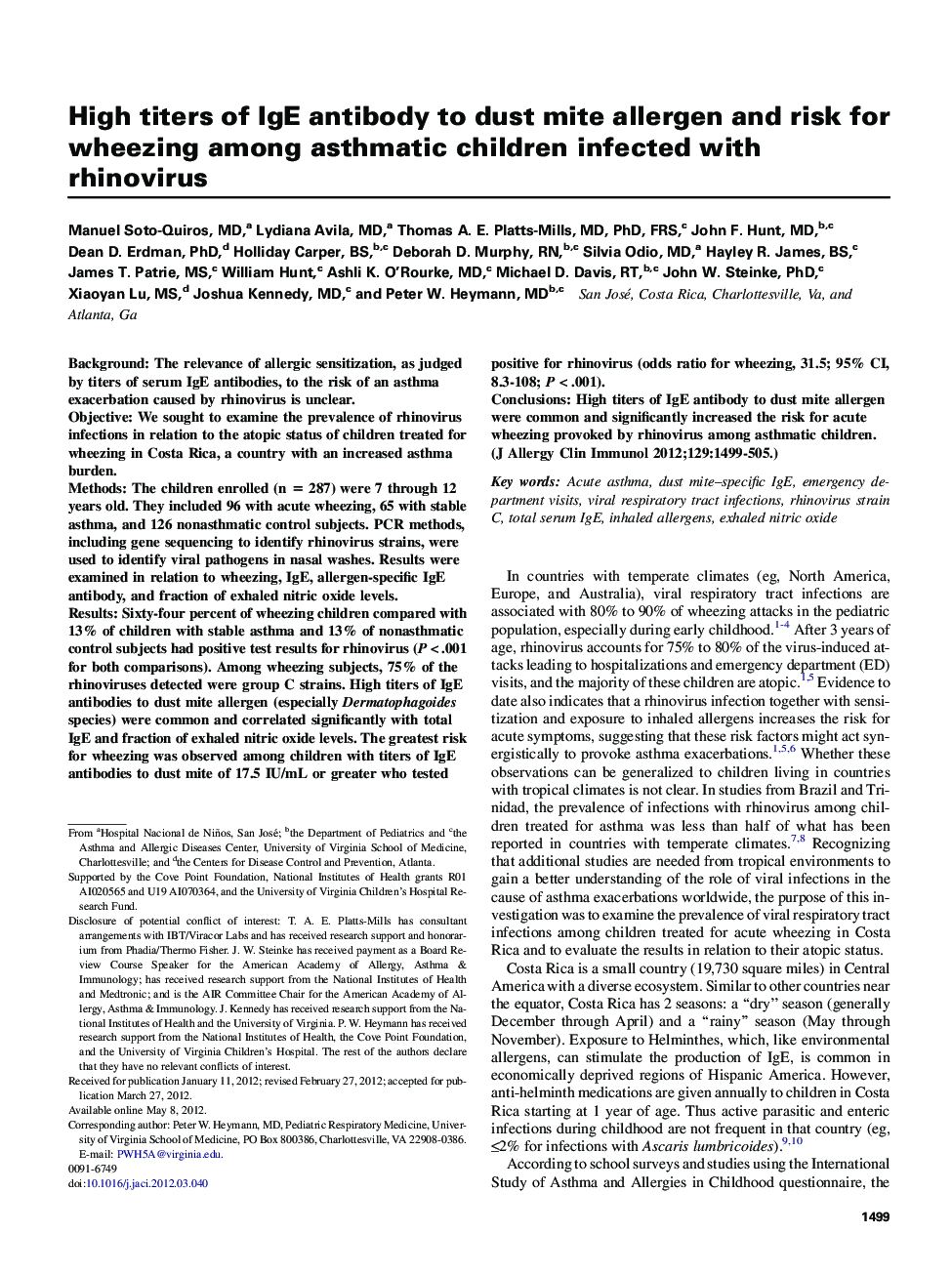| Article ID | Journal | Published Year | Pages | File Type |
|---|---|---|---|---|
| 6066773 | Journal of Allergy and Clinical Immunology | 2012 | 12 Pages |
BackgroundThe relevance of allergic sensitization, as judged by titers of serum IgE antibodies, to the risk of an asthma exacerbation caused by rhinovirus is unclear.ObjectiveWe sought to examine the prevalence of rhinovirus infections in relation to the atopic status of children treated for wheezing in Costa Rica, a country with an increased asthma burden.MethodsThe children enrolled (n = 287) were 7 through 12 years old. They included 96 with acute wheezing, 65 with stable asthma, and 126 nonasthmatic control subjects. PCR methods, including gene sequencing to identify rhinovirus strains, were used to identify viral pathogens in nasal washes. Results were examined in relation to wheezing, IgE, allergen-specific IgE antibody, and fraction of exhaled nitric oxide levels.ResultsSixty-four percent of wheezing children compared with 13% of children with stable asthma and 13% of nonasthmatic control subjects had positive test results for rhinovirus (P < .001 for both comparisons). Among wheezing subjects, 75% of the rhinoviruses detected were group C strains. High titers of IgE antibodies to dust mite allergen (especially Dermatophagoides species) were common and correlated significantly with total IgE and fraction of exhaled nitric oxide levels. The greatest risk for wheezing was observed among children with titers of IgE antibodies to dust mite of 17.5 IU/mL or greater who tested positive for rhinovirus (odds ratio for wheezing, 31.5; 95% CI, 8.3-108; P < .001).ConclusionsHigh titers of IgE antibody to dust mite allergen were common and significantly increased the risk for acute wheezing provoked by rhinovirus among asthmatic children.
